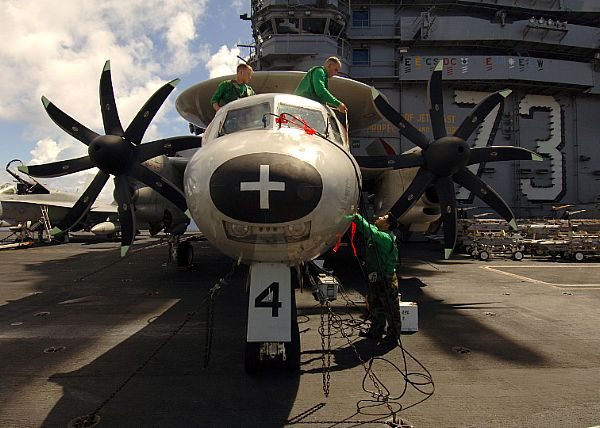A U.S. Navy ship that’s rested on the bottom of the Patuxent River for nearly 200 years is slowly revealing its secrets to archaeologists, a senior Navy administrator said yesterday.
During a “DOD Live” bloggers roundtable, Bob Neyland, head of the Navy’s underwater archaeology branch, discussed the excavation of the USS Scorpion, which was scuttled during the War of 1812.
The Scorpion, the flagship of Commodore Joshua Barney’s Chesapeake Bay Flotilla, is located about 30 minutes outside Washington.
During the War of 1812, Barney was charged to protect Washington from invading British forces. Barney’s plan called for the construction of a flotilla containing smaller barges and gunboats that would be able to outmaneuver the larger British ships in the shallow Chesapeake waters.
The flotilla fought in several battles and played a key role in draining British resources and slowing the invasion. However, Barney’s Chesapeake Bay Flotilla met its end Aug. 22, 1814.
After the Battle of St. Leonard’s Creek, Barney was forced to flee up the Patuxent River to what is now Highway 4, near Pig Point, Md. He was outflanked, seriously wounded, and had used up most of his ammunition. Neyland said it was there that Barney scuttled his flotilla, including the USS Scorpion, to prevent the approaching British navy from commandeering his vessels.
As the flotilla sank, Barney and his remaining crew left Pig Point and made their way to join American troops and citizen-soldiers fighting at the Battle of Bladensburg, Md. As the British forces overcame the Americans, many of the citizen-soldiers retreated, but Barney and his crew stayed to fight. In the end, they were among the last on the battlefield. Barney died in Pittsburgh in 1818 while traveling to Kentucky, where he planned to retire.
Until now, little was known about the construction of Barney’s fleet and, in particular, the Scorpion. Historians knew the Scorpion was a converted gunboat, built in 1806. “We really don’t know a whole lot about the construction of it,” Neyland said, “other than it was one of the larger sloop brig vessels.”
In the late 1970s, amateur archaeologists found 13 vessels on the same spot where Barney scuttled his flotilla. Preliminary evidence suggested the vessels dated to the War of 1812.
“They verified that it was a War of 1812 vessel from recovered parts of a surgeon’s kit, [and from] materials that were appropriate to the War of 1812,” Neyland said.
The ships’ location suggested they were part of Barney’s flotilla. But additional and deeper exploration yielded evidence that removed all doubt that the flotilla and the USS Scorpion had, indeed, been found.
Archaeologists have found some very telling personal items aboard one of the vessels, Neyland said.
“They found a grog cup … and the initials C.W. were on that cup,” Neyland said. “The only C.W. listed with Barney was an African-American sailor named Caesar Wentworth. He was assigned to –… Barney’s flagship, called the Scorpion. So, hence, that’s part of the evidence that suggests the wreck we are looking at today is that of the Scorpion.”
With the excavation under way, the plan is in place to make the USS Scorpion part of the War of 1812 bicentennial commemoration. The commemoration will start in 2012 and continue through 2014. The Scorpion will join the commemoration in 2013. At that point, Neyland said, he and his team will put a steel structure – called a cofferdam — around the 75-foot shipwreck. The water will then be pumped out, thus fully excavating the USS Scorpion.
This method allows a more detailed recording of artifacts and the hull, Neyland said, and will allow for public viewing both on the site and by webcam.










